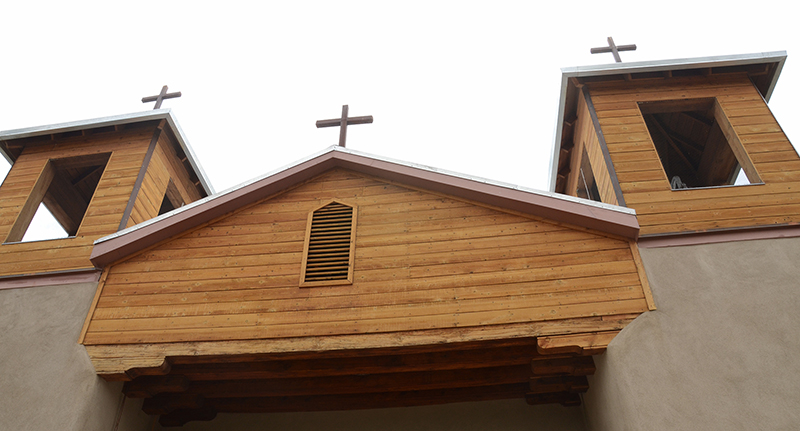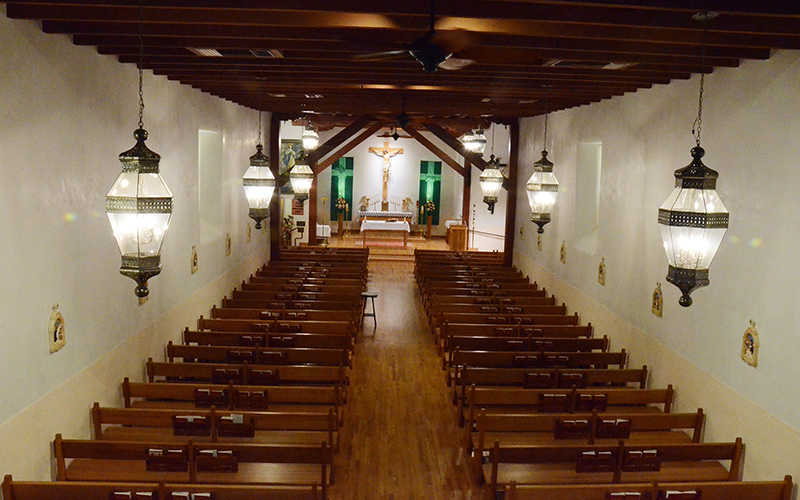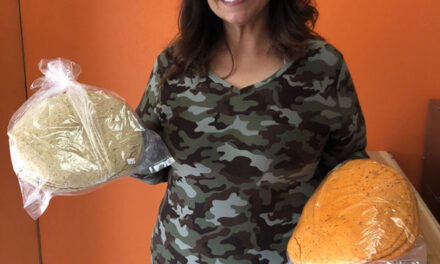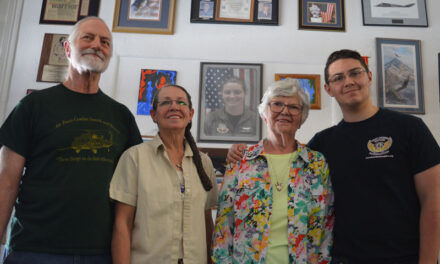Tomé — Immaculate Conception Catholic Church in Tomé has a long and storied past.
Construction of the church started in 1739, the same year the Town of Tomé Land Grant, was issued by the King of Spain.
In the 1750s, the church was blessed and dedicated and people have been using it ever since. All the materials used to build the church came from the local area.
They used cottonwood trees from the bosque, and the pine came from the Manzano Mountains. The rock for the footings came from Tomé Hill.

Jesse Jones | News-Bulletin photo
The Immaculate Conception Catholic Church in Tomé was recently renovated.
The most current renovations to the church were implemented in two phases starting in 2008 and finally being finished in 2021.
The roof was replaced in phase one, and phase two comprised of repairing the exterior hallway and the bell towers, which were actually taken down in the 1960s by the priest because the tower walls began cracking under the weight of the bells.
The construction of the new towers began in 2010. Once completed, the church had its original bells, complete with ropes, just as it did in the beginning.
For more than 100 years, the church only had dirt floors but in the 1800s, the roof collapsed. Church members recycled the lumber from the roof to make the floor. They also used wood from some of the beams to make one of the crosses that is still in the churchyard today.
When the renovations started, the church was able to salvage 60 percent of the original wood from the floors. The church officials wanted to keep as much of the original materials of the church as possible.
They did not want anything too modern, except for upgrading the electrical components and making everything more functional.
When the flooring was removed, church members found graves inside the church. The priest re-blessed them and church members covered them back up, trying not to disturb anything that was found.

Jesse Jones | News-Bulletin photo
The Immaculate Conception Catholic Church in Tomé was recently renovated.
It was a common practice to bury significant people inside the church from the community in those days.
All the walls of the church are anywhere from 35- to 48-inches thick, except for the north wall. In the 1940s that wall collapsed due to moisture buildup, and the church officials used blocks to repair the wall.
When the first phase of renovations took place, the Archdiocese of Santa Fe stipulated all the historic churches in the state use plaster and mud on the exterior walls.
“When I was still in Catechism while the first phase was happening, they actually let us come out when they were re-stuccoing and we all got to get the adobe and start piling onto the wall and a lot of kids I think remember that,” said Monica Padilla, co-chairwoman of the Tomé Fiestas.
Unfortunately, about four months after it was completed, Tomé underwent a 100-year rain, and most of the north side of the church’s wall was washed off.
“The parishioners were kind of upset and rightfully so because we’ve spent that money,” said Robert Sanchez, chairman of the building and properties committees.
The committee members decided to use stucco instead of the mud and plaster.
Many parts of the church were worked on and material was donated by people who live in the community and attend church there.
All the stained-glass windows were donated by different families in the community, with Padilla’s great-grandfather actually donating one of them.
“I think that’s just a testament to this community,” Padilla said. “We’ve always done everything by donations and funding ourselves just to keep our church going.”
During the renovations, all but two of the original stained-glass windows were saved and replaced.
The oldest relic in the church is the Santo Entero or Holy Burial, which is a statue of Christ in the tomb. It was made in 1722 and brought up from Mexico on the Camino Real. The church uses it for the Passion Play during Holy Week.
In the 1870s, a French carpenter came to Tomé and made the three alters used for the services.
Church historian Ramon Torres will lead a tour of the Immaculate Conception Catholic Church and the old jail during the Fiestas on Sunday, Sept. 10.
Jesse Jones lives in Albuquerque with his wife and son. Jesse graduated from of the University of New Mexico twice. This spring, he graduated with a degree in multimedia journalism and, in 2006, he received a bachelor’s degree in university studies with an emphasis in photojournalism. He is a current fellow of the New Mexico Local News Fund.

















